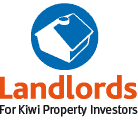"Sensible" structure
Question from Neville updated on 22nd August 2014:
Hi, I own a commercial property. It is held by a company, which is in turn owned by parent holding company. My wife and I are the owners of this. We now want to purchase a second commercial property and would like to check that we are structuring the ownership in a sensible way. The plan is to establish a second company to own the second property, again held by the parent holding company. This is the advice of our accountant. I can understand the benefits of ring fencing the properties in this manner from a risk management perspective, and also the taxation benefits, particularly if one property was sold and a capital gain realised. However, it does create a lot of additional accounting and administration costs, also a lot of additional work. Could you advise me your thoughts on holding all properties within the one QC company for the sake of simplicity? Kind regards, Neville
Our expert Mark Withers responded:

Dear Neville,
It is not entirely clear to me from your summary of facts whether the existing parent company and subsidiary companies are qualifying companies or not. I will therefore restrict my comments to some general structuring issues.
Both qualifying companies and non-qualifying companies ( closed companies) enjoy the benefit of the low 28% corporate tax rate. This essentially means profits can be taxed at 28% and held at this level as long as the profits remain in the company. This will often be an advantage where the profits are being applied to repay debt in the company rather than be distributed as dividends. If however dividends are distributed out of the companies and all the way out to yourself and your wife it is likely that a further 5% withholding tax will need to be deducted from the dividends to top up the overall tax paid to 33%.
A further consideration is the question of ultimately how you will extract a capital gain from the companies. If the companies and not qualifying companies any dividend distributed from a capital reserve remains fully taxable to the shareholders, the status of the capital gain then is effectively changed to taxable simply by virtue of it being distributed as a dividend. This outcome can only be avoided where the company is placed into liquidation and the resulting distribution is made on windup of the company. This can be problematic for a closed company that holds multiple buildings where the gain on one is to be distributed but liquidation is problematic because of the remaining buildings in the company. This is the scenario that is avoided if each company holds only one property.
However, under the qualifying company scenario, capital gains can be distributed tax exempt without the need to wind up and liquidate the company.
So, a qualifying company allows profits to be taxed at 28% and also allows capital gains to be distributed tax free. With these boxes ticked it is probably entirely practical and efficient to allow the company to acquire multiple properties. If however the company is a non-qualifying company I can see the merit in limiting the number of properties in each entity to one to leave the way clear to easily facilitate the distribution of capital gains via windup of the company if and when they occur.
It should be noted that with the LAQC regime now consigned to history it is not possible to create new Qualifying companies. Only those existing companies that transitioned to become QC’s when the regime was wound down can continue with this status. The new look through company regime that replaced the LAQC regime allows LTCs to be created that can distribute capital gains efficiently without them being taxed but LTCs do not have the ability to retain trading profits and so can’t take advantage of the lower 28% corporate tax rate.
Mark Withers and his team at Withers Tsang & Co specialise in advising on property related transactions, valuation and restructure services and tax planning.
Search the Ask an Expert archive
Browse all questions in the Ask An Expert Archive »

